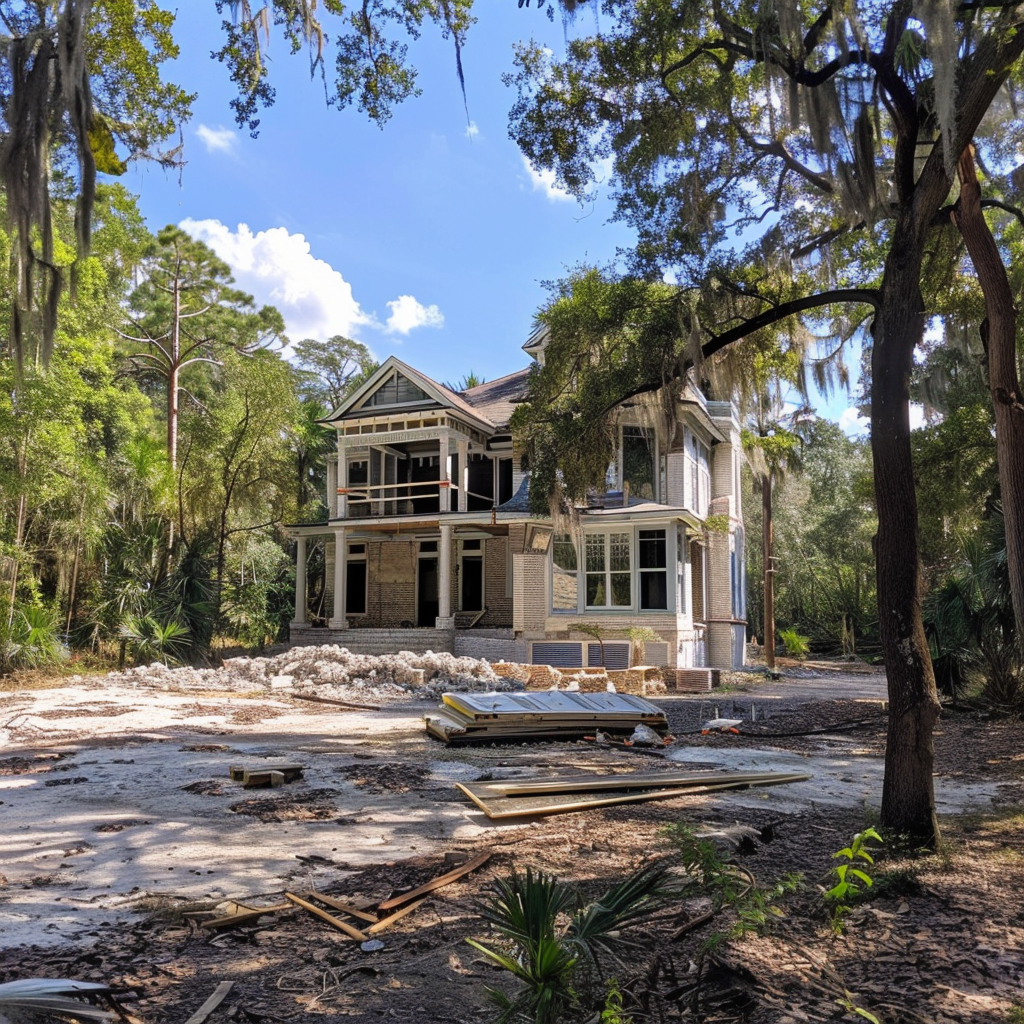Remodeling a historic home presents an exciting opportunity to breathe new life into a piece of history while crafting a space that meets modern living standards. At our South Florida restoration and remodeling company, we understand the unique blend of challenges and rewards that come with transforming these timeless structures.
Understanding the Significance of Your Historic Home
Preserving Architectural Integrity While Updating
Remodeling a historic home goes beyond mere renovation; it’s about honoring and preserving the past. The architectural integrity of these homes tells stories, encapsulating decades or even centuries of history within their walls. When planning updates, it’s crucial to maintain this essence by preserving original features—be they intricate moldings, vintage fixtures, or unique facades—while making necessary modernizations. This delicate balance ensures that while your home meets contemporary standards for comfort and functionality, it also retains its historical significance and character.
Navigating Local Preservation Laws and Regulations
Before embarking on a remodeling project in a historic district or with a landmark property, understanding local preservation laws is essential. Many areas have strict guidelines designed to protect the historical value of properties; thus requiring homeowners to obtain special permits for changes affecting exterior appearances and sometimes interior modifications too. Our team advises consulting with local historic preservation boards early in the planning process to ensure compliance with regulations, preventing potential legal issues and delays later down the line. Engaging experts familiar with navigating these often complex waters can streamline approval processes, ensuring the project proceeds smoothly while respecting community heritage every step of the way.
Key Considerations Before Starting Your Remodel
Conducting Thorough Inspections for Structural Soundness
One of the first steps in remodeling a historic home is ensuring its structural integrity. Given their age, these properties often hide issues like outdated electrical systems, plumbing concerns, or even foundational weaknesses caused by issues such as water damage or mold that can significantly impact both the project’s scope and budget. A comprehensive inspection by qualified professionals familiar with historical buildings is indispensable; it helps identify potential problems early on, allowing for accurate planning and preservation of as much original structure as possible while making necessary updates for safety and efficiency.
Choosing Materials That Complement the Original Architecture
Selecting materials for your remodel requires a careful balance between authenticity and practicality. The goal is to choose options that echo the home’s era, contributing to its historical accuracy while offering the longevity and sustainability that modern living demands. For instance, replacing damaged wood flooring by finding matching existing planks rather than opting for entirely different materials. Or when updating windows, look for energy-efficient versions that mimic the old style. This attention to detail not only preserves the character of the property but also ensures renovations blend seamlessly with original design elements, enhancing overall aesthetic value without compromising periodic charm.
Strategies for Modernizing While Maintaining Character
Integrating Modern Conveniences Without Compromising Style
Modern living demands certain conveniences that historic homes were not built to accommodate, such as energy-efficient appliances, modern HVAC systems, and updated bathrooms and kitchens. The challenge lies in integrating these features without detracting from the home’s historical essence. Creative solutions—like hiding modern technology behind period-appropriate facades or using vintage-style fixtures with contemporary performance standards—allow homeowners to enjoy the best of both worlds. Our approach focuses on understanding each home’s unique character and finding innovative ways to introduce necessary updates subtly and respectfully.
Creative Solutions for Blending Old with New
Successfully remodeling a historic home often requires thinking outside the box to overcome design challenges while preserving its integrity. For example, adding an extension offers extra space but needs careful consideration to ensure it complements the original structure rather than overshadowing it. Using matching materials, replicating architectural details, or even opting for a contrasting yet sympathetic design can make new additions feel like they’ve always belonged. Additionally, interior layout adjustments must be handled sensitively; opening up smaller rooms into more considerable open-plan spaces should maintain original features where possible – think preserved fireplaces or exposed beams – weaving the property’s history through its new configuration.
Common Pitfalls to Avoid in Historic Home Remodels
Overlooking Potential Hidden Costs
One of the most significant pitfalls in remodeling a historic home is underestimating the project’s costs. Given their age, these properties often conceal issues that are not immediately apparent—ranging from structural weaknesses to outdated wiring and plumbing systems requiring comprehensive updates. It’s essential for homeowners to approach such projects with a flexible mindset and budget, anticipating unexpected expenses that may arise once work begins. Engaging with experienced professionals who specialize in historic renovations can provide more accurate cost assessments upfront, helping mitigate financial surprises down the line.
Ignoring Historical Accuracy in Replacements
Another common mistake is making replacements or additions without considering historical accuracy. While it might be tempting to opt for modern materials or designs due to convenience or cost savings, such choices can detract from the home’s character and even affect its value negatively. Authenticity should guide all decisions; this means sourcing period-appropriate materials and employing construction techniques that reflect those used during the original build wherever possible.
For instance, replacing damaged wooden floors with contemporary alternatives might offer short-term benefits but compromise the property’s integrity long-term. Careful research and collaboration with experts well-versed in architectural history ensure any modifications enhance rather than diminish heritage significance, ensuring the home retains as much authentic charm as possible.
At J&R Restoration, we have taken on a wide range of projects. Contact us today to see if we’ll be a good fit to help you with yours.


